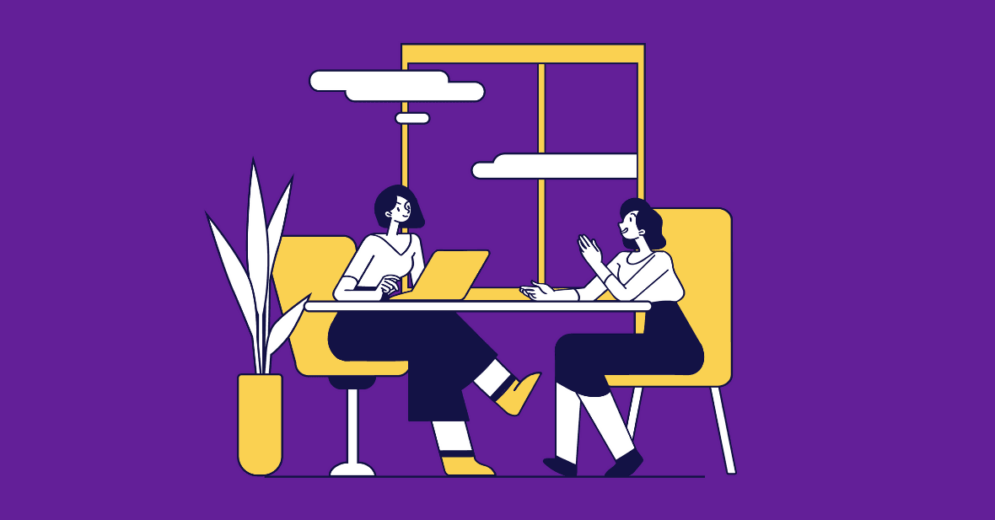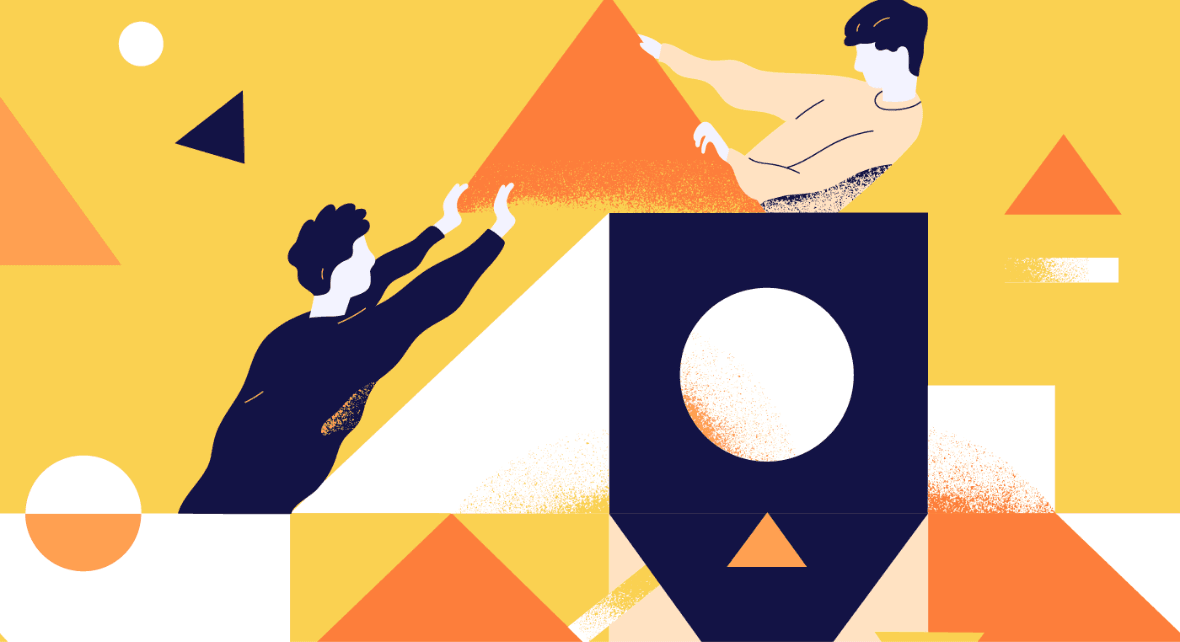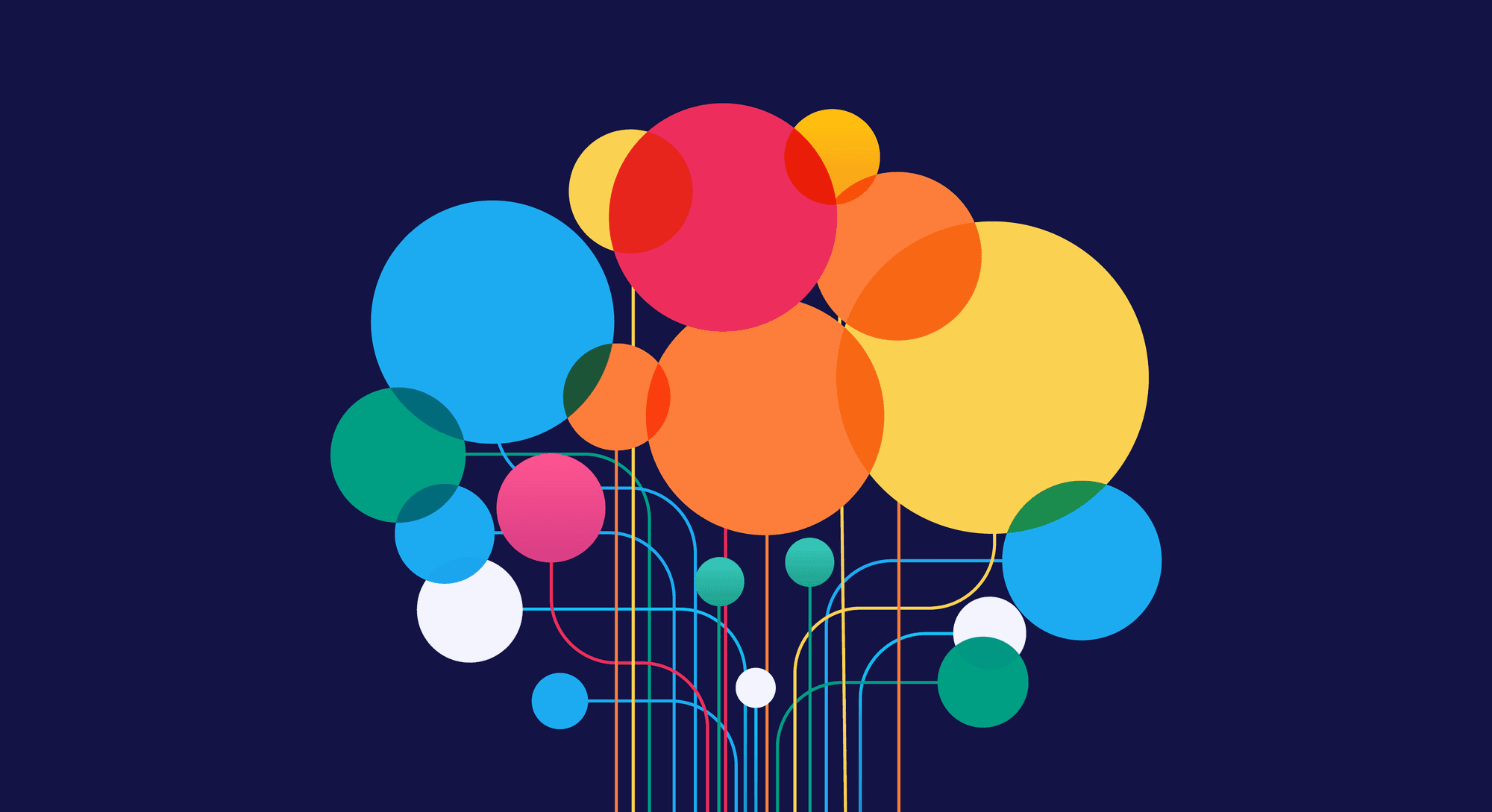Do you know how to conduct a successful user interview? UX Design is about developing products and interfaces that meet users’ needs and embraces concepts like User-Centered Design. In order to do that, designers have to gather insights through research methods like user interviews, as they help identify user pain points.
However, conducting an interview is not as easy as it seems. This article will show you how to prepare and conduct efficient user interviews!
What is a user interview?
User interview is a UX Research method whose main objective is to collect user’s information so designers can learn more about a specific subject.
In this sense, the interview might be used to analyze the user experience and product usability or to identify user demographic and ethnographic information to create user personas, for example.
Therefore, you can conduct user interviews to gather information about:
- user’s background data (demographics);
- how users use technology;
- how users use your product;
- user’s objectives, motivations, pains, and needs.
User interviews, however, do not solely relate to the topics above. You can use this methodology to learn anything you wish to know about users and your product.
When and why conduct a user interview?
User interviews can be conducted when you need to dive into a specific subject about users and how they use a product.
Generally, these interviews happen at the beginning of the product development process, in the discovery phase.
Of course, you can always conduct more interviews along the project.
The topics explored in interviews will depend on how far along a project you are:
- At the beginning of the project: the user interview is used to gather information about the users and their needs, providing insights to create personas and user’s journeys;
- In the middle: user interview will enrich the already existing information about users and their behaviors;
- During or at the end of usability testing: the user interview will collect verbal answers about a specific behavior observed while interacting with the product.
Therefore, run interviews whenever you want to gather insights into what users think and how they act while interacting with a product.
How to prepare a user interview?

The truth is that the process starts before the interview itself. To harvest good results, you should have a plan to follow.
So before being face to face with the user, reflect on the topics below to make sure the interview provides your team with excellent outcomes:
- define an interview team;
- set an objective;
- prepare the questions in advance;
- define how to conduct the interview;
- consider the project schedule and the availability of resources;
- how to recruit users.
Define an interview team
The user interview is an opportunity to collect important information that will support decision-making throughout the project.
Therefore, take the moment to pay close attention to what users say and how they say it, their facial and body expressions, take notes, writing down all these insights and user comments.
In this sense, a team is fundamental to support the user interview process, as there are so many details to notice and pay attention to.
There should be at least two people; while one conducts the interview, the other takes notes.
Besides the reassurance of interviewing in pairs, having a team also helps in the data analysis process. Having more than just one point of view is crucial to enrich discussion and analysis.
Reading tip: Emotional Design – Adding Value To Your Products
Set an objective

Before starting the user interview itself, try to answer this question: What do you want or need to learn?
This brainstorming will help you set the user interview objective you need to pursue.
Also, gather product managers and stakeholders at the same table so you can fully understand what they want to know about the user.
The most important thing in setting your objective is that it needs to be as specific as possible. For example, defining that “the objective is to learn more about the user” is not enough.
The user interview objective must collaborate with the product development and be based on user experience.
Therefore, to help you set your interview objective, try answering questions like:
- What do we need to know about the user?
- How does this information help product design?
Prepare the questions in advance
The user interview is not something you improvise while doing it. No, an interview needs to be prepared in advance.
Even if the user comes up with questions during the talk, you must have a script in hand.
By doing this, you are able:
- to share the script with the team and gather their feedback;
- to remember important questions that shouldn’t be left out of the interview;
- to elaborate clear questions, so users can understand every question;
- to create a journey through the user interview to make it lighter and more comfortable.
Define how to conduct the user interview

Besides preparing the questions in advance, you should reflect on where to conduct the user interview.
Will you talk to them in your office? Or somewhere more “neutral”?
What is the method? Remote or face-to-face? Which tools are you going to use?
These are some examples of what you should ask yourself to define the best way to conduct the user interview.
Plus, you also want to consider other things, such as:
- comfort and convenience; for the team and the users;
- Does the chosen spot or method promote any biases in the users?
Consider the project schedule and the availability of resources
Planning and managing how long each user interview will take is essential to make the process more efficient.
You must consider how many users the team will interview, your team’s availability, and the complexity of the questions.
Recruit users
Of course, you will need to recruit users. So, recruit participants in advance. This way, you reduce the risk of last-minute dropouts.
If you have a budget, you can pay for recruiting companies to help you with this process.
9 tips to conduct the user interview
Conducting a user interview is not that complicated once you have the script, place, method, and questions ready. But its efficiency requires some experience.
Therefore, we have listed some great tips so you can conduct interviews better in the future.
1) Create a connection with the users and make them comfortable

People are generally more likely to talk when they are comfortable and relaxed.
Creating a connection with the user is important, so the interview flows more naturally. Therefore, consider the following:
- before starting the interview, explain to the user what the objective of the process is;
- make the user feel heard, taking notes of everything they say and maintaining eye contact with them;
- do not interrupt the user while they are speaking;
- do not rush the user, and give them time so they can express themselves adequately;
- at the beginning of the user interview, ask simple and general questions to make them more comfortable;
- be empathetic and don’t show first judgments;
- be authentic.
Reading tip: Desk Research – How To Conduct Secondary Research Efficiently
2) Anticipate different answers
It is normal to create some expectations or assumptions about the answers users will give you during the interview.
However, it is also common to be surprised by some unexpected answers. Therefore, as difficult as it is, try to anticipate every response that users can give that could make you uncomfortable.
Anticipating different answers is the key element for great follow-up questions.
3) Create follow-up questions
Follow-up questions look for delving further into a specific topic or question already made.
The objective is to stay on the topic to unravel more information about what the user is saying or thinking.
In this sense, follow-up questions can be made during the user interview or at the end of it.
Some follow-up questions examples are:
- Could you tell me more about [x]?
- Could you give me an example of this situation you mentioned?
- You have mentioned [x]. What is the reason?
- What did you want to say with [x]?
- Why?
- Let me see if I got this right. What you want to say is [x]?
- Could you show me how you’ve done [x]?
4) Create more questions than you think is necessary

Each person is different from the other.
Some feel at ease and like to talk and tell long stories. But, at the same time, others are more straight to the point and don’t like to delve into matters.
This way, it is essential to have more questions than you think will be necessary, in addition to the follow-up questions.
It is crucial to have enough material to use so you can gather insightful information from users and make the most out of the resources invested.
5) Don’t make assumptions
If something is not clear, ask again.
Don’t make assumptions about the answers users give you. This kind of misinformation might harm further analysis and decisions about product development.
So, don’t be shy to ask questions over and over until you have cleared all the information you’ve got.
It is crucial not to finish the user interview with more questions than answers.
6) Don’t be afraid of negative answers
Users tend to feel uncomfortable giving negative feedback or criticism about a product or interface.
Don’t be afraid of encouraging negative answers to gather great insights about possible improvements and opportunities. This is actually great for your product’s success.
To this, make questions like:
- What did you like the least about our product?
- What would you want to be different in that specific interaction/button/text?
- What would make you stop using our product?
So don’t be afraid of hearing bad things about your product, as the final interview results will always be used to improve the overall user experience.
7) Respect users’ silence

Silence is powerful and might be helpful for the user to put their thoughts together to answer your question.
So, give users some time to think about your question. Don’t rush them.
In addition, you can use silence in your favor. If you feel that the user could elaborate more on their answer, stay silent as to show them to continue and show yourself curious.
This little gesture might make users give more information.
8) If possible, record the user interview
Recording the user interview allows you to listen to the answers whenever needed. This way, you can catch information that was missed during the interview.
If you choose to do that, don’t forget to ask users if they allow the recording.
9) Is there something you want to add?
Make this question at the end of the user interview.
Give them the possibility to make additional comments they couldn’t make during the interview.
At first, users will say they don’t have it. But can you remember how powerful silent is?
Give them some time to think. Most of the time, they will remember something they would like to add.
Disadvantages and limitations of user interviews
User interview has some limitations, such as:
- People don’t remember everything: we can’t fully trust our memory. Users might create things to cover the blank spaces of their memories.
- Users don’t know what is relevant for designers: it is not rare for users to hide important details about their experience with the product. That’s why follow-up questions are so crucial in user interviews;
- Talking and interacting are different things: There are times when users talk about how they interact with the product, but that is not exactly what they really do.
How to analyze and report the user interview

After conducting a user interview, it’s time to analyze all the information to get insights that will support product development decisions.
For this, you must understand that the user interview analysis is more qualitative than quantitative. That said, you need to work with some method or systematic approach to organize that information. For example, you can use Mind Maps.
In addition, keep in mind that the data you gathered represents users’ experiences, memories, expectations, and needs.
The next thing to do is to put together a presentation to show the results to stakeholders. Don’t forget to include the insights and data interpretation, not just pure data and user quotes.
User interview is not usability testing
Another important thing to remember is that a user interview is not the same as usability testing.
Although both processes have points in common, there are some basic differences between them:
- User interview doesn’t need a prototype. Usability testing does;
- User interview encourages users to speak. Usability testing encourages users to show;
- The interviewer must create a connection with the user. Facilitators must avoid contact with users;
- Usability testing verifies how easy the interface is to use;
- Usability testing evaluates what makes a user’s journey easy or not.
Therefore, understand all these differences, so you know when to apply a user interview or usability testing. These processes have different objectives, so don’t use one instead of the other.
In addition, keep in mind that a user interview requires experience. Therefore, the more you do it, the better you get at doing it.








